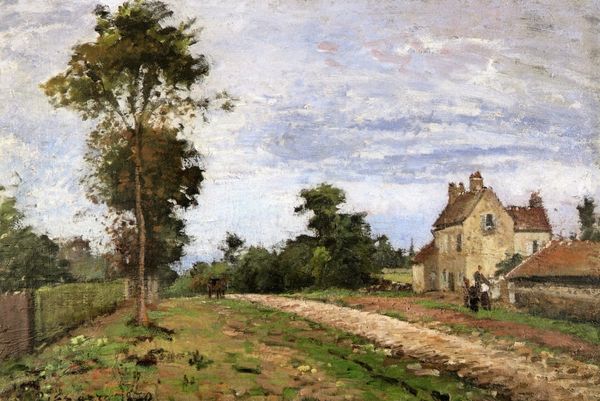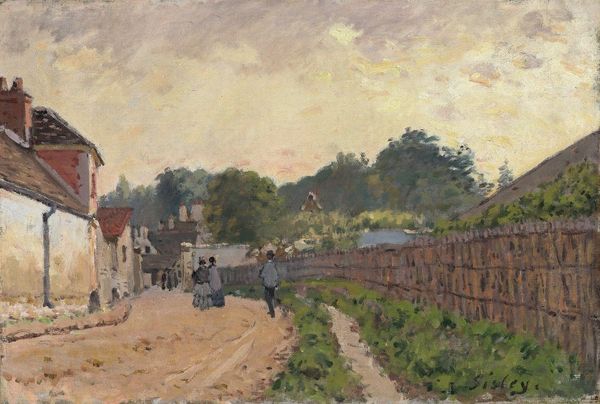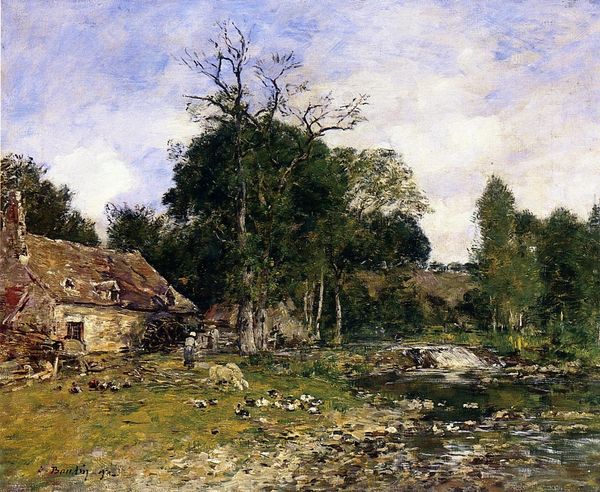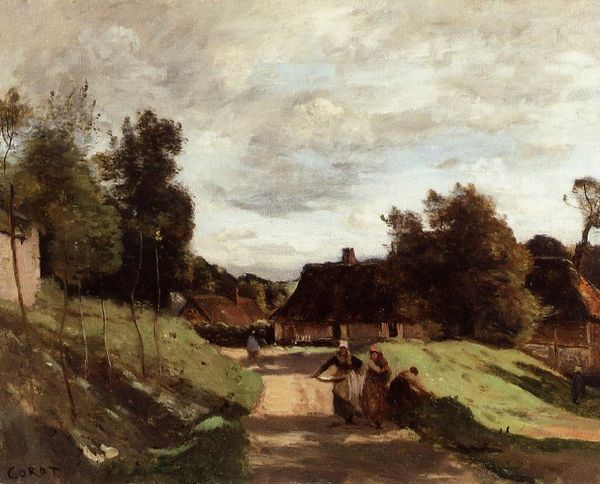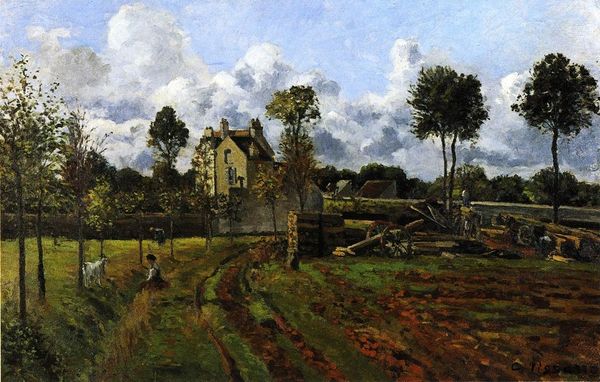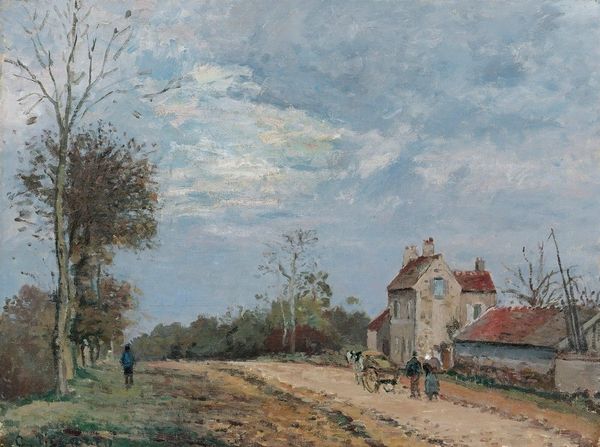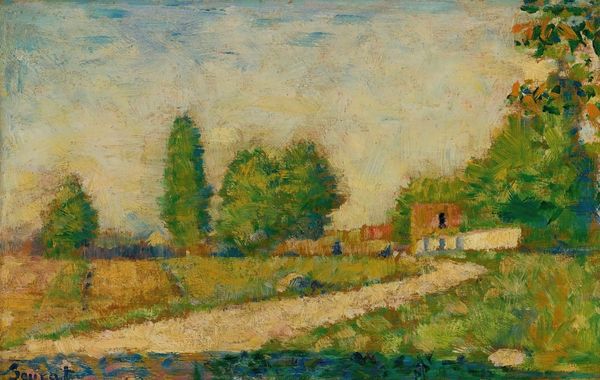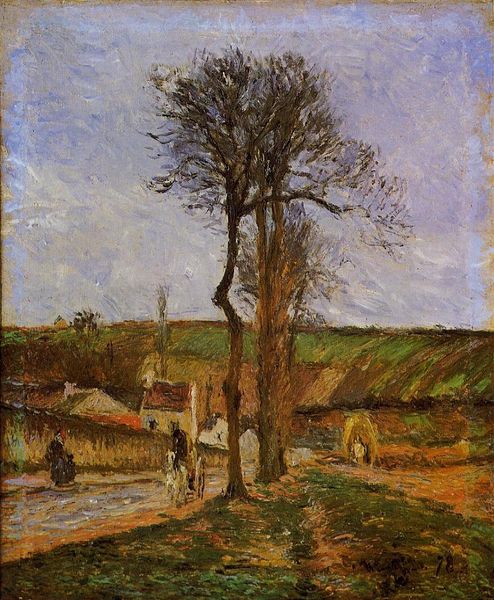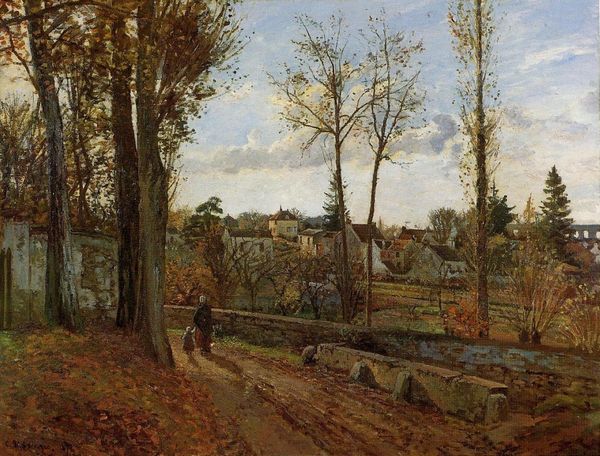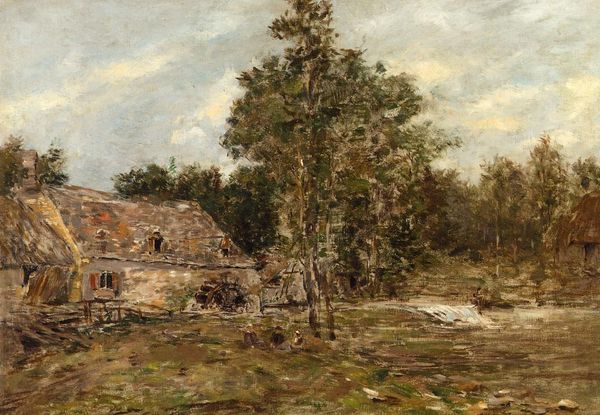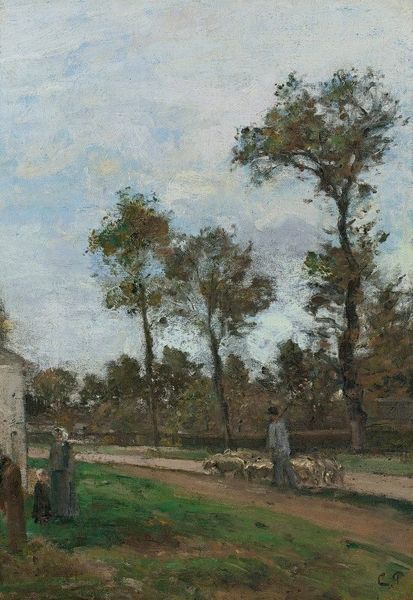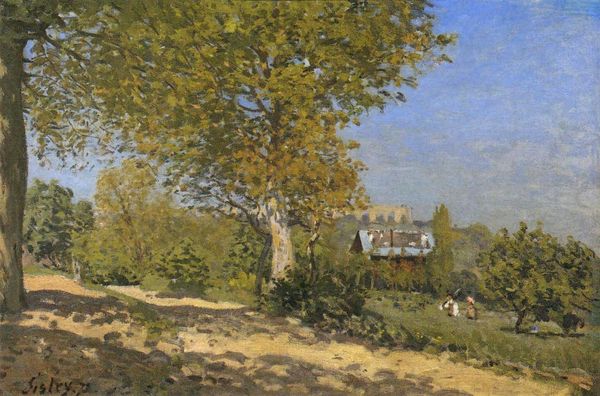
painting, plein-air, oil-paint
#
painting
#
impressionism
#
plein-air
#
oil-paint
#
landscape
#
impressionist landscape
#
oil painting
Copyright: Public domain
Curator: Let's examine Camille Pissarro's "Road in Port Marly," painted in 1872. This landscape, created with oil paints, is currently held in a private collection. What are your initial thoughts? Editor: A subdued palette creates a very soft, almost dreamy effect. I’m drawn to how the structures are both present and diffused, like memories fading around the edges. Curator: Pissarro, an impressionist, was deeply interested in working en plein air. His paintings often reflect a desire to capture the immediate experience of the rural French landscape and the lives of those who lived and worked there. Considering his socialist leanings, could this be a social commentary as well? The road and wagon indicate infrastructure used for market exchange perhaps? Editor: Fascinating, but consider the way the road is rendered. The broken brushstrokes almost deny the solidity of the pathway, suggesting instead a field of light and texture. It is less about commerce and more about optical experience. What would happen if Pissarro made that road "solid" as it were? It'd lose its impact. Curator: But we can't ignore how he has carefully depicted the people. The muted palette suggests an intention to capture them in the social landscape as essential and unpretentious. It reflects labor practices in post-revolution France. And, considering his place as an artist who fled persecution from conservatives, that may be deliberate. Editor: I disagree. It seems much more in line with his Impressionist colleagues, who saw modern life as increasingly fragmented. He shows us, through brushstroke, that it is our mind that must do the job of 'seeing'. The subdued figures merely anchor that theme. Curator: But Pissarro was an anarchist, keenly aware of social divisions and class dynamics. Editor: Perhaps, but regardless, it appears Pissarro's hand guides the brush, forming and dissolving objects—not a commentary on society, but an investigation into perception itself. The figures are but a formal element that assist that quest. Curator: Perhaps the beauty lies in the overlap between process and politics. Pissarro encourages us to engage not just with the final artwork, but to actively consider its role within cultural conditions. Editor: Or to reflect upon what it really means to observe. To appreciate art for what it offers to one’s immediate sense of sight.
Comments
No comments
Be the first to comment and join the conversation on the ultimate creative platform.
